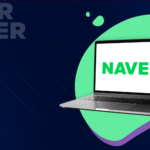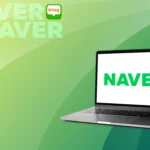In 2025, Naver is still the preferred Search Engine by Korean internet users, holding 92% of the market share. But doing SEO on Naver is not that easy since it is more of a portal-like platform than a traditional search engine. The layout is cluttered with different categories, so foreigners that are used to navigating in minimal layouts like the Google SERP might find it quite overwhelming.
Naver’s SERP is classified into the following categories:
- PPC Results (Power Links).
- Organic results (websites).
- Naver Properties results.
- Naver Blog: A blogging platform offered by Naver. Quick quide on how to use the platform.
- Naver Café: forum or community discussion Platform. Quick quide on how to use the platform.
- Naver Post: Like a blog, but for industry experts. – Naver Post has announced the termination date of its servers – 30th of April, 2025.
- Naver Shopping: Naver eCommerce platform.
- Naver KnowlegeIN: Question/answer platform similar to Quora.
- Naver Encyclopedia: Naver Wikipedia.
PPC results and Naver properties are heavily prioritized in the SERPs, making it quite hard for organic results to rank. Therefore many companies decide to start a Naver Blog to increase their Share of Voice (SoV). However, creating a Blog will not be useful, if you are not willing to put in the time and effort. SEO is a never-ending game regardless of if it is for your website or your Naver blog posts.
Here are some ranking factors and tips to build a successful strategy.
Naver Blog Ranking factors
- Quality of on-page content.
- Popularity and reliability of the source
- General blog activity.
- Topical focus.
- Official blog status.
Tips for ranking on Naver Blog
1. Register your website on Naver.
Before you start posting, you need to make sure that your website is registered on Naver, since creating a blog is a way to attract more customers to your business. Register your website on Naver Webmaster Tools so It can be crawled and indexed by the Naver bot. After the registration, you will automatically get a Naver blog.
2. Keyword Research
A good Naver Blog SEO strategy usually starts with a in-depth keyword research. Sort the core keywords for your business and search for them on Naver. In this case, we are going to focus on the blog section. What kind of content is ranking for that particular keyword? What titles, descriptions, or related terms are they using? What do you think about the quality of the content?
Some tools to conduct keyword research are:
- Naver Keyword Tool
- Naver Autocomplete
- Naver Trends
- Google Keyword planner
- SEMrush (90M keywords indexed)
- Ahrefs (27M Keywords indexed)
Check out InterAd’s ultimate guide to become an expert at keyword searching on Naver.
3. Create quality, shareable content
One piece of high-quality content will perform better than 10 low-quality blog posts. Try to create informative and detailed content to engage with your readers, and avoid clickbait titles and overlinking, since it might be considered spam.
Take a look at other blogs in your niche, since the language and style for popular blogs can be very different depending on your audience. Including original pictures and graphs will help your blog to get higher in rank and make your content more shareable, but make sure they are mobile-friendly since most users will be reading it on their smartphones.
4. Verify your account
This tip will help your content to get more credibility which is a key to establish loyalty and trust among your consumers. If your business meets the criteria, you can apply for an “official blog” and get the official emblem.
The requisites for applying are the following:
- Minimum of one article written in the last year.
- Your blog has a profile picture and cover.
- You only have a representative account for your business.
- The blog nickname must use the official name of the target.
- Your blog follows Naver’s Blog Operating Principles.
5. Identify trending topics
Korean consumers are trend-driven, and you can make the most of it by researching and implementing topics that are very popular in your strategy. You can identify trends in Naver trending topics on Naver’s main page or exploring Cafés in your niche. Twitter is also a good tool to see what is trendy.
6. Get backlinks
Backlinks are a factor in Naver’s P-Rank algorithm and favor both the quality and quantity of backlinks to your blog. Backlinks coming from Naver’s own properties are also treated favorably.
Conclusion
Managing the SEO of Naver Blog is quite the challenge that many face. If you would rather have somebody else do it for you, you can outsource InterAd’s Naver Blog management services. With more than 20 years of Naver management experience, you can count on InterAd’s expertise.





